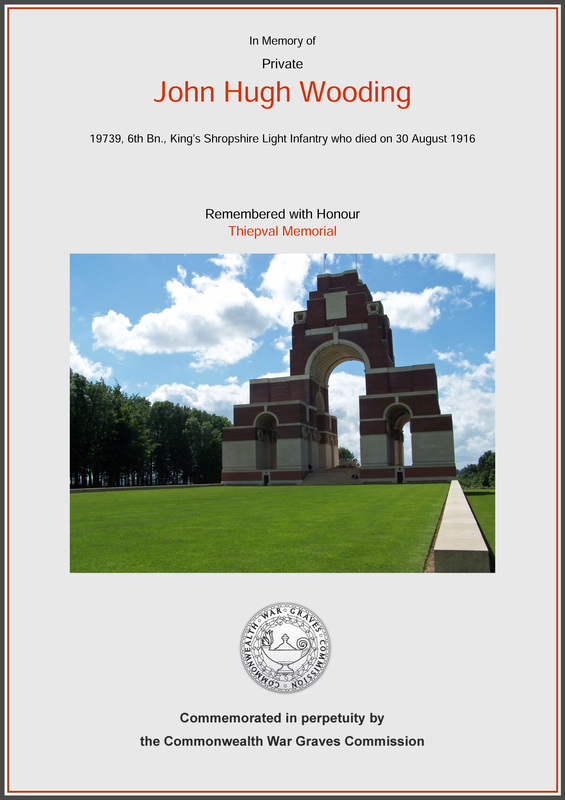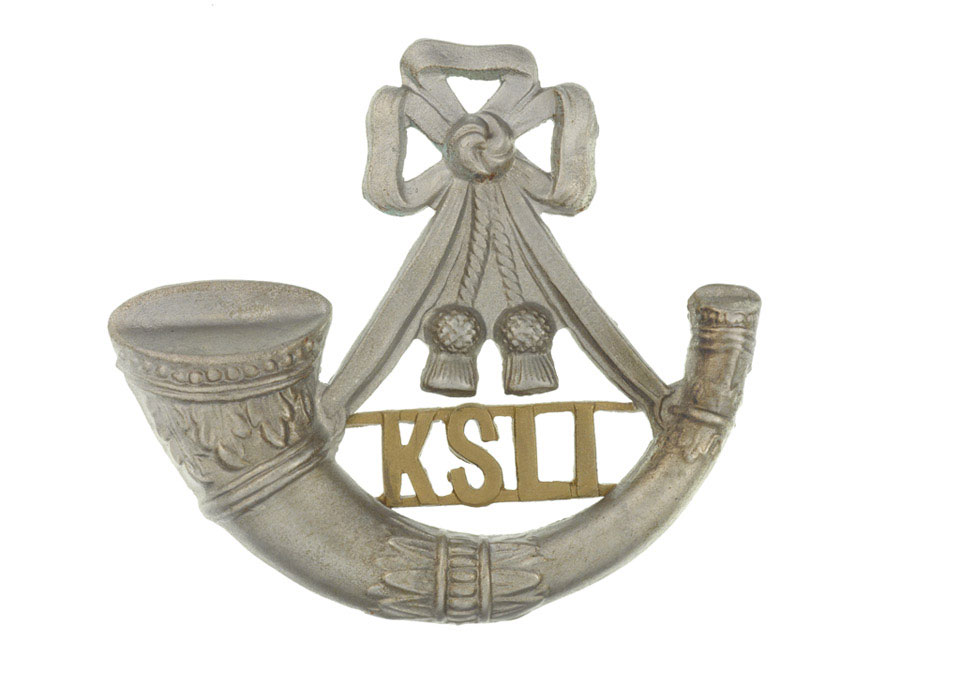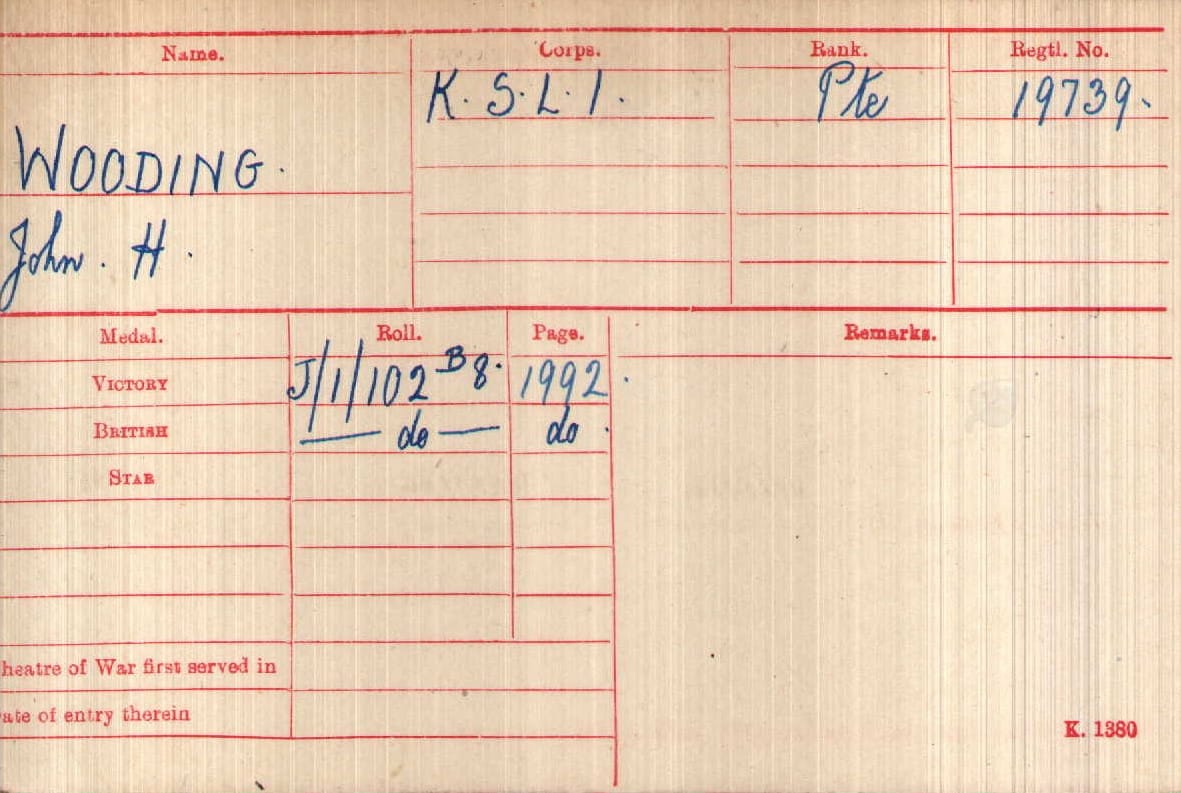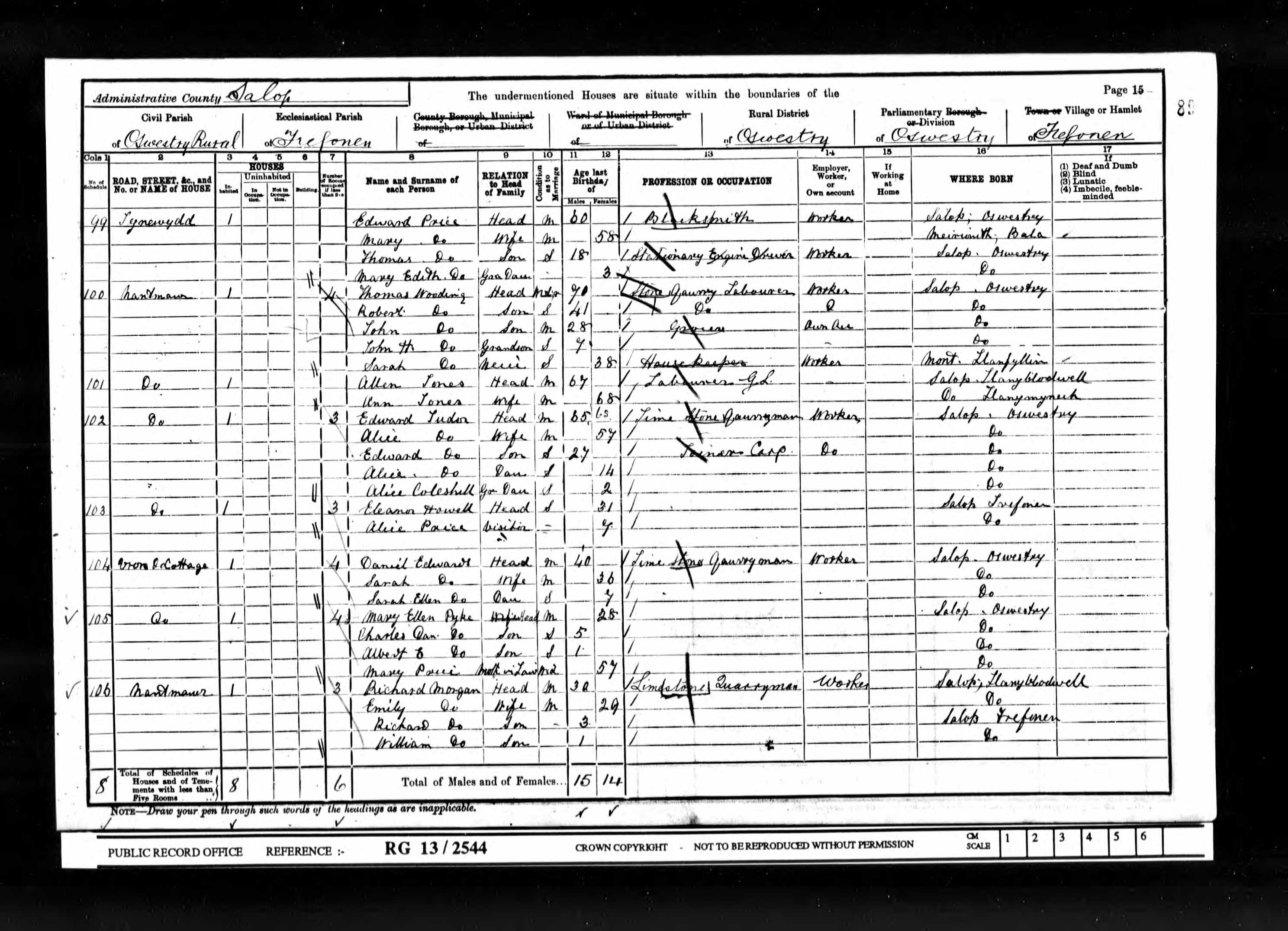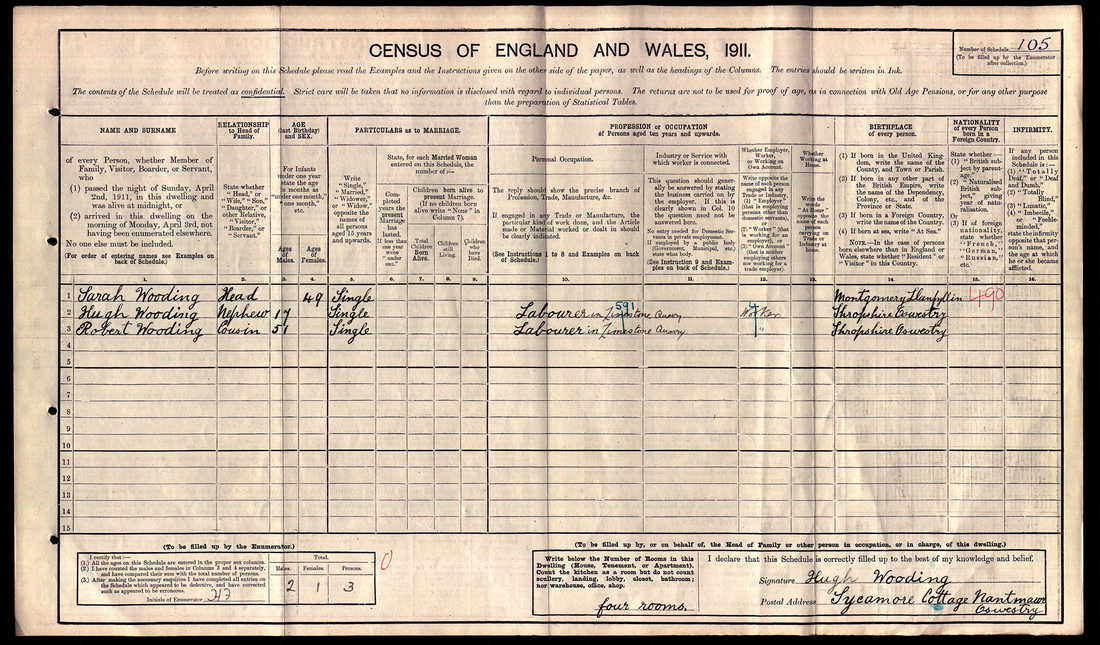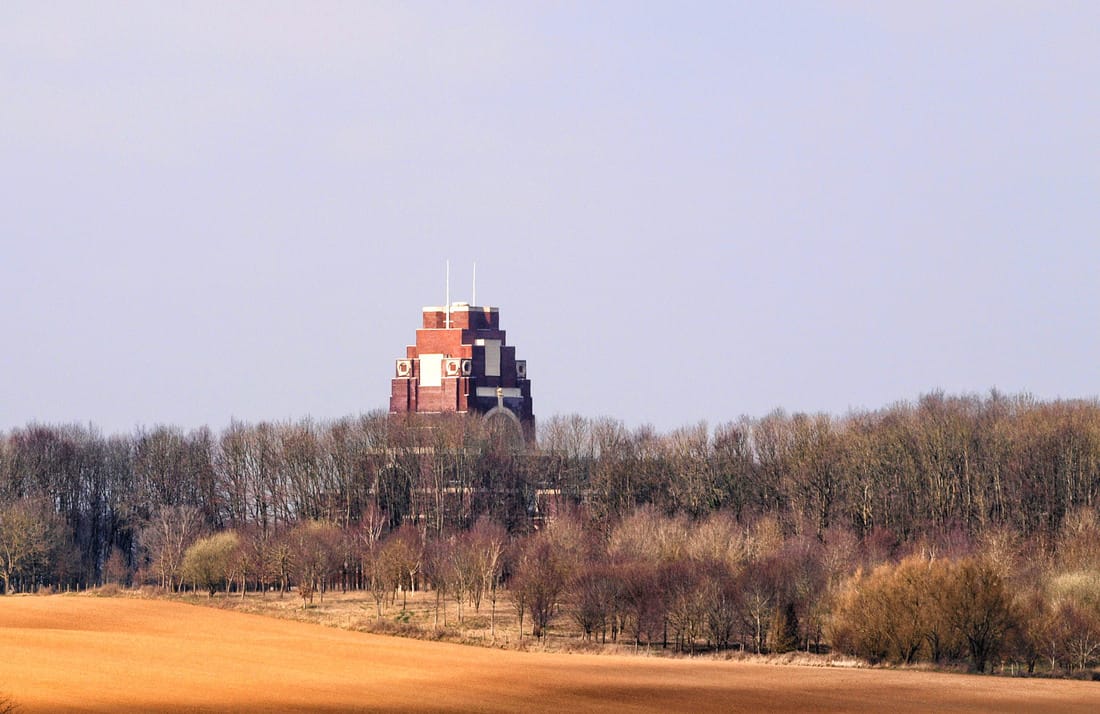John Hugh Wooding
|
Introduction
John Hugh Wooding was born in 1893. His fathers name was John and the 1901 census shows him living with his father listed as a Groceer his and grandfather (head of the house) in Nantmawr and who at the age of 70 is still listed as working as a stone quarry labourer. The 1911 census would seem to show him living in Nantmawr with his Auntie Sarah and a Cousin and himself now working as a Quarryman but under the name of Hugh rather than John Hugh. |
The 6th Battalion King's Shropshire Light Infantry War Diary entry for the 30th August 1916 seen above effectively shows that the Battallion had troops in both frontline and reserve trenches. Some of these were in very poor condition with water up to the waist in some cases. There was heavy
artillery fire by both sides, with the Germans using mostly heavy guns on the Battalion front line and Reserve lines.
At 9.37 p.m. an S.O.S. was received from North of Trones Wood which was cancelled at 10.25 p.m.
The War Diary reports that it appearred to Battalion H.Q. that the German have attempted a bombing raid on the right of the Battalion.
The Diary does not record it's casualties for the 30th or 31st August but according Commonwealth War Graves Commission five men from the Battalion were killed on this day. Sadly one of these was Private John Hugh Wooding.
artillery fire by both sides, with the Germans using mostly heavy guns on the Battalion front line and Reserve lines.
At 9.37 p.m. an S.O.S. was received from North of Trones Wood which was cancelled at 10.25 p.m.
The War Diary reports that it appearred to Battalion H.Q. that the German have attempted a bombing raid on the right of the Battalion.
The Diary does not record it's casualties for the 30th or 31st August but according Commonwealth War Graves Commission five men from the Battalion were killed on this day. Sadly one of these was Private John Hugh Wooding.
6th (Service) Battalion, 1914-18.
A war-raised Service Battalion, formed in Shrewsbury in September 1914, posted to the 60th Brigade of the 20th Division. It landed at Boulogne on 22nd July 1915 and then served entirely on the Western Front.
The 6th fought at Loos in September 1915, around Ypres in 1916 (where it relieved the 1st Battalion) and then on the Somme, including the capture of Guillemont.
It fought at Langemarck (3rd Ypres) in August 1917 and on the Menin Road, Ypres, in September. Served against the Hindenburg Line near Cambrai at the end of the year and throughout the German Spring Offensive in 1918, seeing severe fighitng at St. Quentin.
6/KSLI ended the war north west of Mauberge, France and was disbanded in Shrewsbury in June 1919.
6th Battalion Battle Honours:
France and Flanders 1915 ; France and Flanders 1916 ; France and Flanders 1917 ; France and Flanders 1918 ; Mount Sorrel; GuiIIemont ; Flers-Courcelette ; Le Transloy ; Langemarck 1917 ; Menin Road; Cambrai 1917* ; St.Quentin ; Rosieres. (13)
A war-raised Service Battalion, formed in Shrewsbury in September 1914, posted to the 60th Brigade of the 20th Division. It landed at Boulogne on 22nd July 1915 and then served entirely on the Western Front.
The 6th fought at Loos in September 1915, around Ypres in 1916 (where it relieved the 1st Battalion) and then on the Somme, including the capture of Guillemont.
It fought at Langemarck (3rd Ypres) in August 1917 and on the Menin Road, Ypres, in September. Served against the Hindenburg Line near Cambrai at the end of the year and throughout the German Spring Offensive in 1918, seeing severe fighitng at St. Quentin.
6/KSLI ended the war north west of Mauberge, France and was disbanded in Shrewsbury in June 1919.
6th Battalion Battle Honours:
France and Flanders 1915 ; France and Flanders 1916 ; France and Flanders 1917 ; France and Flanders 1918 ; Mount Sorrel; GuiIIemont ; Flers-Courcelette ; Le Transloy ; Langemarck 1917 ; Menin Road; Cambrai 1917* ; St.Quentin ; Rosieres. (13)
Census data
|
Memorial and War Grave Information
Private, John Hugh Wooding 19739 6th Battalion Kings Shropshire Light Infantry is "Remembered with Honour" on the Thiepval Memorial on the Somme in Northern France. He is also remembered on the Nantmawr National School Memorial Roll as a former pupil. |
Historical Information
On 1 July 1916, supported by a French attack to the south, thirteen divisions of Commonwealth forces launched an offensive on a line from north of Gommecourt to Maricourt. Despite a preliminary bombardment lasting seven days, the German defences were barely touched and the attack met unexpectedly fierce resistance. Losses were catastrophic and with only minimal advances on the southern flank, the initial attack was a failure. In the following weeks, huge resources of manpower and equipment were deployed in an attempt to exploit the modest successes of the first day. However, the German Army resisted tenaciously and repeated attacks and counter attacks meant a major battle for every village, copse and farmhouse gained. At the end of September, Thiepval was finally captured. The village had been an original objective of 1 July. Attacks north and east continued throughout October and into November in increasingly difficult weather conditions. The Battle of the Somme finally ended on 18 November with the onset of winter.
In the spring of 1917, the German forces fell back to their newly prepared defences, the Hindenburg Line, and there were no further significant engagements in the Somme sector until the Germans mounted their major offensive in March 1918.
The Thiepval Memorial, the Memorial to the Missing of the Somme, bears the names of more than 72,000 officers and men of the United Kingdom and South African forces who died in the Somme sector before 20 March 1918 and have no known grave. Over 90% of those commemorated died between July and November 1916. The memorial also serves as an Anglo-French Battle Memorial in recognition of the joint nature of the 1916 offensive and a small cemetery containing equal numbers of Commonwealth and French graves lies at the foot of the memorial.
The memorial, designed by Sir Edwin Lutyens, was built between 1928 and 1932 and unveiled by the Prince of Wales, in the presence of the President of France, on 1 August 1932 (originally scheduled for 16 May but due to the death of French President Doumer the ceremony was postponed until August).
The dead of other Commonwealth countries, who died on the Somme and have no known graves, are commemorated on national memorials elsewhere.
(click on the link below for more information)
http://www.cwgc.org/find-a-cemetery/cemetery/80800/THIEPVAL%20MEMORIAL
On 1 July 1916, supported by a French attack to the south, thirteen divisions of Commonwealth forces launched an offensive on a line from north of Gommecourt to Maricourt. Despite a preliminary bombardment lasting seven days, the German defences were barely touched and the attack met unexpectedly fierce resistance. Losses were catastrophic and with only minimal advances on the southern flank, the initial attack was a failure. In the following weeks, huge resources of manpower and equipment were deployed in an attempt to exploit the modest successes of the first day. However, the German Army resisted tenaciously and repeated attacks and counter attacks meant a major battle for every village, copse and farmhouse gained. At the end of September, Thiepval was finally captured. The village had been an original objective of 1 July. Attacks north and east continued throughout October and into November in increasingly difficult weather conditions. The Battle of the Somme finally ended on 18 November with the onset of winter.
In the spring of 1917, the German forces fell back to their newly prepared defences, the Hindenburg Line, and there were no further significant engagements in the Somme sector until the Germans mounted their major offensive in March 1918.
The Thiepval Memorial, the Memorial to the Missing of the Somme, bears the names of more than 72,000 officers and men of the United Kingdom and South African forces who died in the Somme sector before 20 March 1918 and have no known grave. Over 90% of those commemorated died between July and November 1916. The memorial also serves as an Anglo-French Battle Memorial in recognition of the joint nature of the 1916 offensive and a small cemetery containing equal numbers of Commonwealth and French graves lies at the foot of the memorial.
The memorial, designed by Sir Edwin Lutyens, was built between 1928 and 1932 and unveiled by the Prince of Wales, in the presence of the President of France, on 1 August 1932 (originally scheduled for 16 May but due to the death of French President Doumer the ceremony was postponed until August).
The dead of other Commonwealth countries, who died on the Somme and have no known graves, are commemorated on national memorials elsewhere.
(click on the link below for more information)
http://www.cwgc.org/find-a-cemetery/cemetery/80800/THIEPVAL%20MEMORIAL
